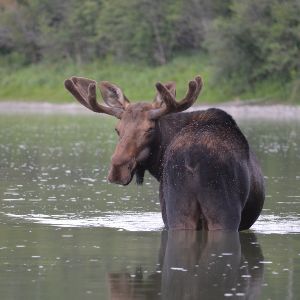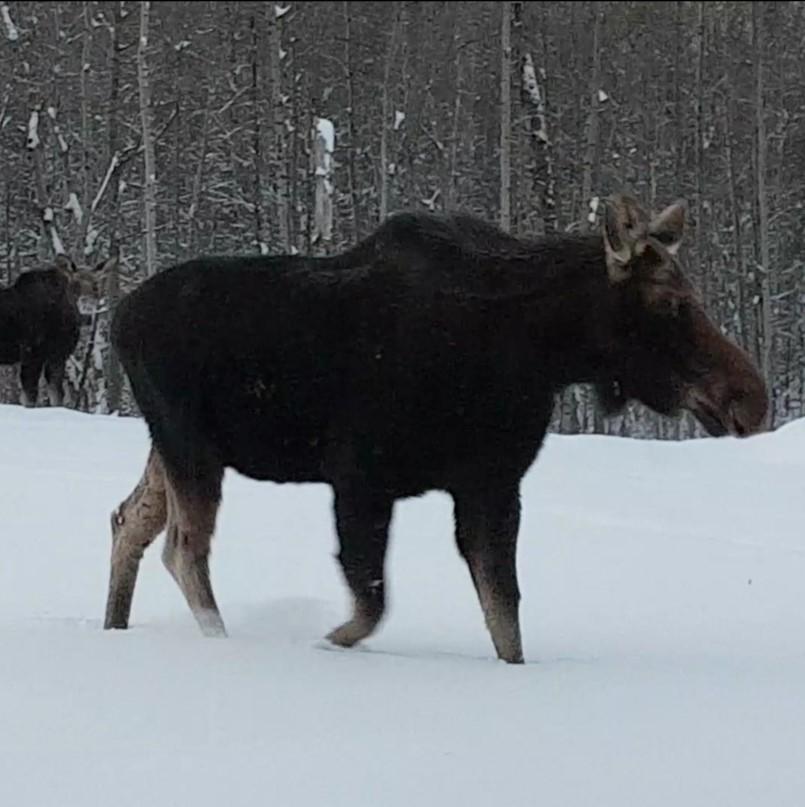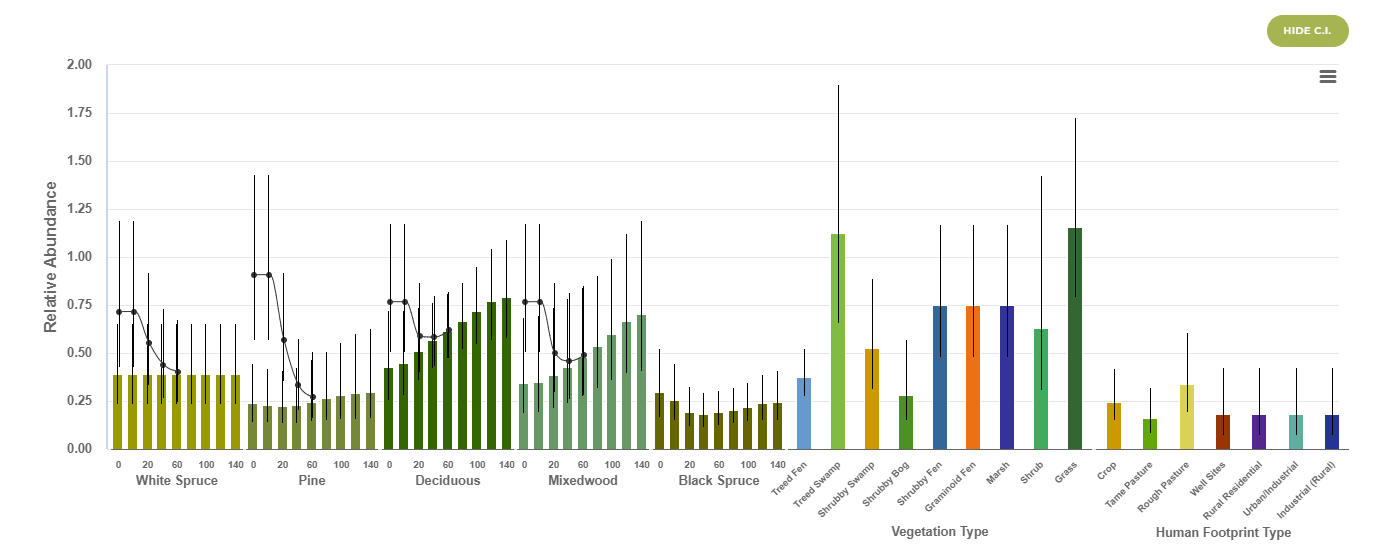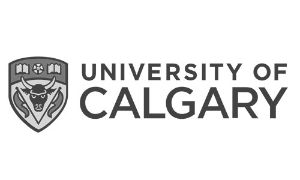Status of Moose
Status of Moose in Tolko's Northern Operating Area including a summary of moose density, intactness, habitat associations, and the effects of land base change on habitat suitability.
Moose density
- Much of the Northern Operating Area provides suitable habitat for moose, but suitability decreases in more northerly areas.
- Moose are predicted to benefit from the increased quantity of young browse created by forestry activities in the region.
- The combined effects of land base changes (e.g., human footprint, fire, forest aging) in the Northern Operating area are predicted to have minimal impacts on habitat suitability for moose.

Introduction
The Moose is a large, wetland-associated species found in all natural regions of Alberta, including Tolko's Northern Operating Area.
Moose are particularly well-adapted to life in the boreal forest, where the species:
- is a generalist browser of woody deciduous shrubs;
- forages in wide variety of open habitats, such as burns, harvested areas, and shrub lands;
- uses mature forests for bedding, which provides snow interception and thermal and security cover.
While Moose use a variety of habitats, they generally avoid some types of human footprint—such as roads, industrial facilities, and cutlines—due to increased mortality risk from both predators and hunting.
Moose are considered a high-value species in the region because of their importance to local communities in and around the Northern Operating Area[1]. Therefore, one of the objectives of the Forest Management Plan is to maintain suitable habitat and thermal cover for Moose[1].
In this section, we summarize moose density, habitat suitability, habitat associations, and the impacts of human footprint.
Wildlife cameras are used to monitor Moose...

...collecting data across the landscape in all seasons
Moose Habitat Suitability
Status of Moose in the Northern Operating Area, as measured by the Biodiversity Intactness Index was:
- These means that moose habitat suitability under current conditions with human footprint is the same as predicted habitat suitability without human footprint.
- Most of the landscape in the Northern Operating Area is predicted to provide moderately suitable habitat for Moose, with lower habitat suitability in the more northerly sections.
- Because Moose can use a variety of native habitats and respond positively to young harvested areas, any negative effects due to the other development activities are balanced by the availability of other habitats across the landscape to meet their requirements for foraging, security, and thermal cover.

Moose density of 0.27 moose/km2 in the Northern Operating Area is similar to the predicted density of 0.24 moose/km2 across the boreal forest
Habitat Associations
Moose use a variety of forest types and vegetation types, as well as young harvested areas, to meet their requirements for foraging, thermal cover, and security cover across seasons. More information on Moose and their habitats in Alberta can be found here.
- Moose can be found in all forest types and vegetation types.
- Relative abundance is highest in the treed swamp and grass vegetation types.
- Moose relative abundance is higher in young harvested stands compared to naturally disturbed stands of similar age in all forest types.
- Aside from forestry footprint, Moose relative abundance is low in all other footprint types.
Wetlands provide critical habitat for Moose as key foraging habitat and in the summer months, regulating body temperature and offering refuge from biting insects.
Impacts to Moose Habitat
Effects of Forestry Footprint
The ABMI combines our species habitat models with land base information to infer the effects of forestry footprint on Moose at two scales:
- Local scale effects indicate how much habitat suitability for Moose changes in the exact areas where forestry footprint occurs.
- Regional population effects show how much habitat suitability for Moose is predicted to have changed due to forestry footprint in the region, compared to a reference landscape with no forestry footprint. Details for calculating sector effects can be found in Methods.
Local Scale Effects

Habitat suitability is predicted to increase by 28.6% for Moose where forestry footprint occurs in the Northern Operating Area
Regional Effects
_Alces%20alces_3006x2000_432x432.jpg)
At the regional scale, habitat suitability was improved by 1.9% across the Northern Operating Area due to forestry footprint.
Effects of Land Base Change
Effects of Land Base Change (2010–2021) on Habitat Suitability
In this section we report on how moose habitat changed in the Northern Operating Area due to the following land base changes between 2010 and 2021: forestry (new and old), non-forestry footprint (new and old), fire, and aging of undisturbed stands.
- The arrow diagram shows the generalist nature of Moose: changes to habitat suitability from 2010 to 2021 are low (note the scale on the x-axis) for all land base change types.
- The largest response to land base change is a predicted increase of 1.3% due to new forestry footprint. Responses to other land base changes were all predicted to be very small.
- The net result is a small (0.9%) improvement in the availbility of suitable habitat for Moose between 2010 and 2021 in the Northern Operating Area.
Moose Response to Land Base Changes. Summary of the effects of land base changes on Moose density in Tolko’s Northern Operating Area between 2010 and 2021.
References
Tolko Industries Ltd., Norbord Inc., and La Crete Sawmills Ltd. 2017. Forest management plan. Forest management plan submitted to Alberta Agriculture and Forestry December 2017 for FMU26. 375 pp.






